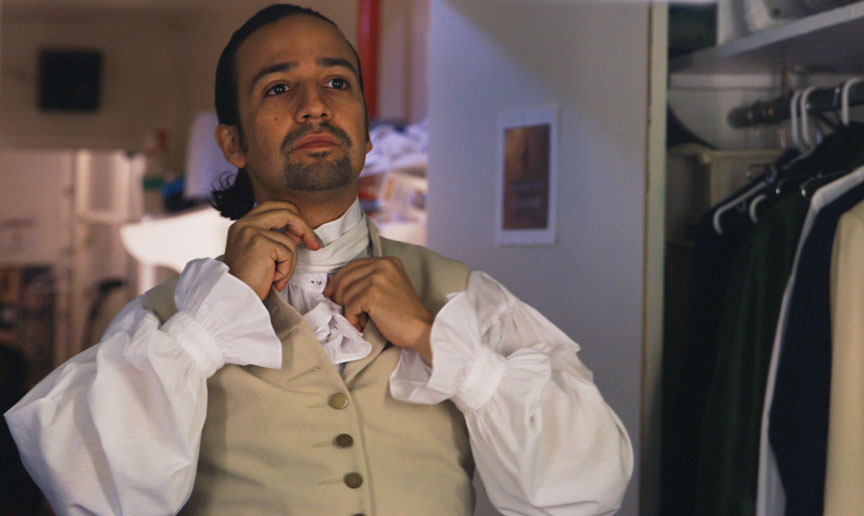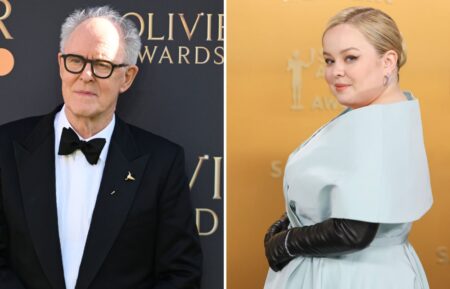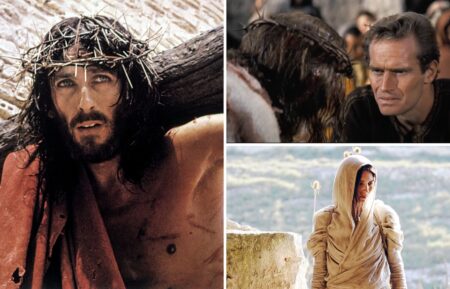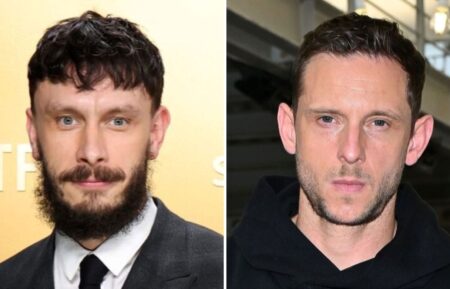First Look: ‘Hamilton’ Comes to TV in ‘Hamilton’s America’ (PHOTOS)

Who lives, who dies, who tells your story? Hamilton’s America, directed by Alex Horwitz and produced by RadicalMedia, kicks off PBS’ Fall Arts Festival on October 21 and goes behind the scenes of the Broadway smash Hamilton.
Horwitz—a former roommate of the musical’s creator and original star, Lin-Manuel Miranda—started documenting the creation of the musical after Miranda played him a demo of the opening song, “Alexander Hamilton.” In addition to footage of the original cast, politicians (Presidents Barack Obama and George W. Bush) and entertainers (Questlove, Jimmy Fallon) shared their thoughts on the 11-time Tony-winning hit. “Lin’s Hamilton experience has been a whirlwind, and making a good, entertaining scrapbook is the least I could do for him,” Horwitz says.
We talked with Horwitz about working with Miranda, how accessible the documentary is for Hamilton newbies, what had to be cut, and more.
What inspired you to follow this Hamilton process so early on?
Lin played me a demo of the first song in the show, “Alexander Hamilton,” back when it was all he had. That’s really all I had to hear to become a devoted Hamilton fan. I’m a theater geek and an amateur history nerd, so it was love at first listen. I instantly saw that Lin was taking the tradition of dramatizing history in an amazing new direction. Wherever it lead, I knew the journey would be compelling, so I started filming.
It wasn’t the behind-the-scenes aspect that interested me. That was already done really well for Lin’s first Broadway show, when RadicalMedia and Great Performances partnered to make In the Heights: Chasing Broadway Dreams. I wanted to do something different this time. I wanted to explore the history with a film that serves as a companion piece to the show. I got the first bits of material on my own, and then continued to develop it with RadicalMedia, until we partnered again with PBS’ Great Performances. So, I guess now I’m a professional history nerd.
RELATED: Hamilton’s America Team on Keeping the Focus on Hamilton
You have a long-time relationship with Lin-Manuel Miranda. What was it like for you on a personal level being able to be able to document this for a friend? What input did he have in the finished product?
Lin is one of the executive producers of the film, and has been a sounding board from beginning to end. But, and I don’t take this for granted, he has really supported my ideas for the film. He was always game for my planned shoots, and made himself available during a very busy time for him.
Lin the friend and Lin the colleague are pretty indistinguishable from each other. His generosity and openness on both fronts facilitated my making this film more than any other contributing factor. Firstly, I needed his permission to film the process, and he gave it without hesitation. That’s a rare gift, because even though Lin is open and loves engaging with his fans, he is, like most writers, protective of the creative process. He let me sit in and film writing sessions, and that’s some of the most special material in the film. I’m sure that our friendship afforded him a level of comfort in those situations that he might not get with a journalist, and I think that reads onscreen.
For my part as a filmmaker, I was very happy to exploit that generosity, but it’s also been my pleasure to be able to capture these moments in time for my friend. Lin’s Hamilton experience has been a whirlwind, and making a good, entertaining scrapbook is the least I could do for him.

An exclusive photo of Lin-Manuel Miranda at the Alexander Hamilton monument in New York’s Central Park.
What was the balance you wanted to strike between showcasing the musical itself and the interviews?
Well, in addition to a lot of interviews, we documented the research “field trips” where the cast of the show went to sites of historic significance and gained insight and further connected with the characters they were playing on stage – from Valley Forge to Mount Vernon, and plenty of spots around New York.
Ultimately, I think the main storyline of Hamilton’s America is the life of Hamilton himself. Lin’s story and the journey of the show are the lens through which we tell that main story. Both storylines progress simultaneously, complementing each other at all times, so the goal is to give you two movies in one. Our editor, Brett Mason, did an incredible job weaving these two textures together, so that the film maintains a wonderful stream of consciousness and is never boring. That’s the hope, anyway.
There’s the possibility that some people may be watching this without having seen the play or having heard the music. What was the key to making it accessible to newbies and the die-hard fans?
It’s designed for everyone. Theater fans and history buffs, veterans and newbies alike. The key was to always give the audience some exposition about history and about where Lin was in the show’s progress, but just enough to give them context for what they are seeing, no more. I used as much of the actual show content as I was allowed to share, but I selected shorter excerpts from all over the show, rather than a few longer clips, so that you get as wide a sampling as possible.
I tried to imagine a distant future in which people who’ve never heard of Hamilton (hard to imagine, I know) come to this film as a primer. Die-hard fans will never be able to get enough Lin and Hamilton, and everyone else needs just enough to get them interested in listening to the album, or picking up Ron Chernow’s Hamilton biography, or, if they can get their hands on them, buying tickets.
Was there a particular moment from an earlier version of this documentary you’re particularly heartbroken to not have in the final cut? Is there a key moment you’re most proud of?
We filmed about 100 hours of content over three years, so we certainly had to lose a lot, but having too much good footage is a good problem to have.
There was a nice field trip with Tommy Kail, the director of Hamilton. We took him to the museum of the Society of the Cincinnati, which was a sort of club for officers of the Continental Army and their descendants. They opened the vaults and showed Tommy the epaulets from Hamilton’s uniform, and then a diamond medal that Washington gave to Hamilton. It was a great bit of tactile history, seeing these items from Hamilton’s actual person.
RELATED: Drunk History Visits the Story of Hamilton and More for Season 4
We also filmed a roundtable with the three Schuyler sister actresses at the Hamilton-Schuyler House in Morristown, New Jersey, and another roundtable with Lin and some of the leading men at Fraunces Tavern in Manhattan. I miss these scenes, but I don’t regret cutting them. No one ever said a film was too short, so I err on that side.
And this is to say nothing of the unused hours of interviews with the cast of Hamilton, two Secretaries of the Treasury, President George W. Bush, and President Obama, among others. Using all that sparingly gave me time for the stuff in the film I’m most excited about. Christopher Jackson’s visit to Mount Vernon is really emotional. And there’s a few minutes we spend on “The Room Where it Happens” that I’m very proud of, in which the weave between show content and history comes alive beautifully. In this film, you get to see some stuff that even audiences at the Richard Rodgers Theatre don’t get to see.
Hamilton’s American, Friday, October 21, 9/8c, PBS.







